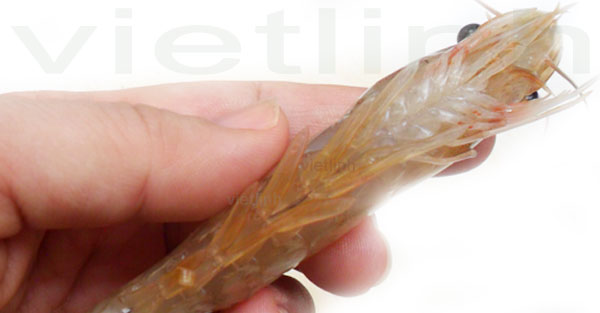2.5.2. Diseases caused by filamentous bacteria
* Signs:
- Shrimp gill turns black or brown; walking legs and swimmerets turn into gray color and are covered with a fuzzy layer.
- Severe illness makes shrimp gill turn yellow, gray or blue with a fuzzy layer affecting shrimp’s respiration. Shrimp heads are floated, near pond edges, and died scatteredly.
- More seriously, shrimp cannot molt.
- The diseases are common in ponds with high content of organic matters and thick shrimp density.
* Pathogens:
- Mostly filamentous bacteria are Leucothrix Mucor. In addition, there may be due to some other bacteria: Cytophagr sp, Flexibacter sp, Thiothrix sp, etc. They can work independently or in combination with other pathogens to cause diseases in gills, and other parts of shrimp.
- Filamentous bacteria are saprophytic, living in the sea, estuaries, and can bind to the surface of shrimp to cause diseases. They are capable of process chitin, cellulose and other organic compounds.
* Preventions - treatments:
- Improving the environment with water changes and aeration systems.
Improve environmental conditions and kill bacteria in shrimp body: siphon bottoms of the ponds; change new water to reduce density of bacteria in water; use products permitted in the list of the Ministry of Agriculture and Rural Development and base on the manufacturers' instructions.
- Increase resistance to shrimp by vitamin C.
- Do not breed shrimp in high density.
- Avoid vulnerable factors to shrimp.
- Periodically, use microbial products to reduce organic matters; increase resistance in shrimp with good environmental management and vitamins C, A, E. and b Glucan.
Source: Temporary process for safe brackish-water shrimp farming in areas affected by diseases in Vietnam. According to The Official Dispatch No. 10/TCTS-NTTS. January 6th, 2015. Vietnamese Directorate of Fisheries
Viet Linh 2015. Translated by Sonia Linh V.
